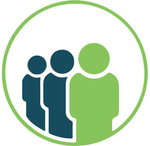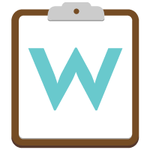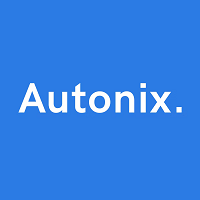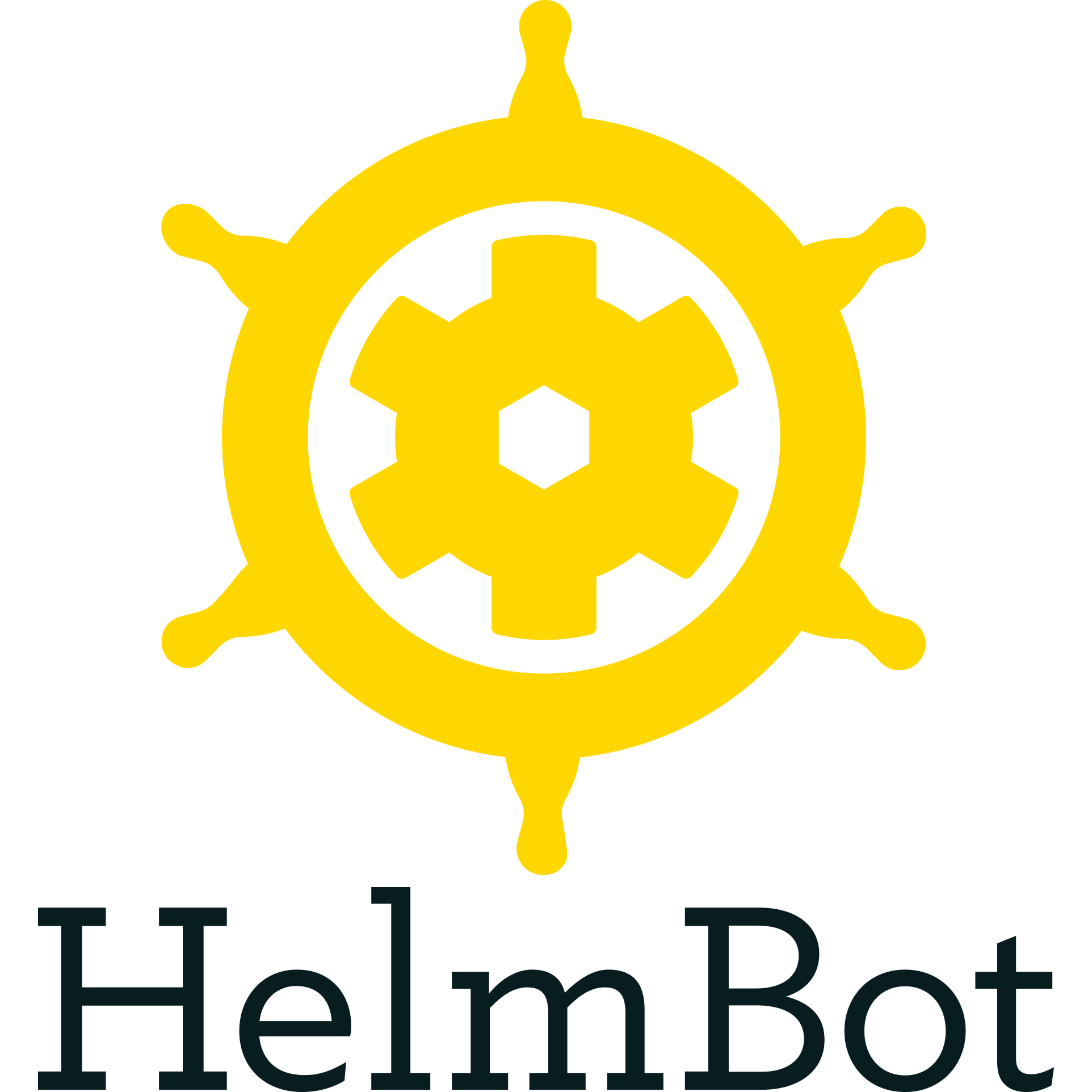What Is Waitlist Software?
Waitlist software, often known as waitlist management software, is a solution for organizations to effectively manage their waiting lists. Waitlists have become commonplace in companies such as restaurants, hairdressers, daycare centers, and healthcare facilities as the demand for online services has grown. However, manually keeping a waiting list is time-consuming and error-prone. This is where the waitlist software comes in.
Waitlist software is essentially a booking system that allows customers to join a virtual queue or waitlist for a service or appointment. This eliminates the need for physical waitlists, paper notes, or manual tracking systems, which are frequently ineffective. Customers can join the queue online, through a smartphone app, or by text message, making it convenient and accessible to everyone.
One of the most important characteristics of waitlist software is its capacity to provide automated notifications to clients. This means that when a slot becomes available, clients on the queue will be contacted in real time, lowering the likelihood of no-shows and delays. Customers can also get updates on their current position in the queue, expected wait durations, and any modifications to their reservation.
Waitlist software provides numerous advantages to businesses, including enhanced productivity, more customer happiness, and better overall administration. Businesses that can track and monitor wait times can make better decisions and manage their operations, resulting in a better customer experience. Depending on the business and industry, waitlist software may also include online payments, analytics and reporting, interfaces with other software systems, and configurable waiting forms.
What Are The Recent Trends In Waitlist Software?
Waitlist software is an invaluable resource for businesses and organizations of all sizes, helping them to easily manage their waitlists, boost customer satisfaction, and optimize internal operations. Waitlist software, like any other technology, is always evolving and adapting to meet the changing needs of its customers.
Let's explore, the most recent trends in waitlist software, so you can stay updated and make an informed purchase.
1. Integration Of Communication Channels: One of the most significant advances in waiting software is the integration of numerous communication channels. Customers rely on many channels such as social media, websites, and messaging applications, therefore organizations are searching for ways to streamline communication and deliver a consistent experience. waiting software now enables businesses to communicate with clients via SMS, email, and social media platforms, keeping them updated throughout the waiting process.
2. Advanced Analysis And Reporting: Data analytics is no longer exclusive to large enterprises. Small and medium-sized firms are also leveraging data to make better decisions and streamline operations. Waitlist software now includes comprehensive analytics and reporting features that enable organizations to monitor wait times, consumer behavior, and other vital indicators. This information can assist identify areas for improvement, optimize staffing and resource allocation, and improve the overall customer experience.
3. Customisation And Personalization: As customer expectations rise, businesses are increasingly focusing on providing a unique and tailored experience. Waitlist software is no exception, with vendors giving customization options to meet the specific demands of each firm. Businesses can now customize their waitlist software to match their brand and fulfill their individual needs, from branding and style to specific features and workflows.
4. Self-Service Features: Customers like to handle their activities without the need for human interaction, hence self-service options have grown in popularity in recent years. Waitlist software now includes self-service capabilities like online check-ins and waitlist monitoring, which allow customers to join the waitlist and receive updates without having to physically visit the business or talk with a staff member.
5. Integration Of Reservation Systems: To manage client flow, many firms use a waitlist as well as a reservation system. Waitlist software integration with reservation systems has recently been popular, allowing businesses to streamline both processes and give a better customer experience. This interface reduces the need for duplicate data entry and provides a smooth transition between the waitlist and reservation systems.
Benefits Of Using Waitlist Software
Waitlist software is a strong tool that may help organizations of any size. With the proliferation of online booking systems and appointment scheduling, waitlist software has become critical for managing waitlists and improving client experiences.
We'll look at the advantages of adopting waitlist software and why it should be a key priority for your organization.
1. Streamlined Waitlist Management: One of the primary benefits of adopting waiting software is the ability to streamline waitlist administration. Businesses can easily add, remove, and manage consumers on the waitlist thanks to an intuitive interface. This saves time and minimizes human mistake, resulting in a seamless and hassle-free operation.
2. Real-Time Updates: Gone are the days of continually checking in with clients to see whether a place has opened up. Waitlist software provides real-time updates, notifying customers as soon as a slot becomes available. This feature not only saves time but also provides convenience to both businesses and customers.
3. Customizable Communication: Effective communication is essential for keeping clients satisfied, particularly when they are on a waitlist. Waitlist software enables businesses to send personalized communications to clients, including projected wait times, waitlist status updates, and other critical information. This keeps clients informed and decreases the chances of misinterpretation.
4. Analytics & Reports: Waitlist software provides significant insights via analytics and reports. Businesses can collect client data, appointment history, and peak hours to assist with future planning and decision-making. This tool enables organizations to have a better understanding of client behavior and enhance their operations.
5. Integration With Other Tools: Another significant advantage of waiting software is the ability to interface with other applications. For example, it might interface with your company's scheduling software or CRM system, resulting in a more seamless experience and avoiding the need for several platforms. This streamlines operations and increases overall efficiency.
6. Improved Efficiency And Revenue: Overall, waitlist software improves corporate efficiency and income. The reduced processes, real-time updates, and increased customer satisfaction all contribute to a more efficient and lucrative organization. This program also saves staff time, allowing them to focus on more vital responsibilities.
Important Factors To Consider While Purchasing Waitlist Software?
The buyer's guide should have only one conclusion. When it comes to handling waitlists, having the correct software may be a game changer for businesses of any size. Waitlist software is intended to simplify the process of maintaining and organizing customer or client waitlists, resulting in a more seamless and efficient experience for both the business and its customers. However, with so many alternatives available, it can be difficult to evaluate which waitlist software is best for your organization.
To make an informed decision, here are some crucial elements to consider while selecting waitlist software:
1. Simplicity Of Use: The first and most significant consideration is the software's simplicity of use. Look for an interface that is simple to use and does not require substantial training for your employees. A simple and intuitive design will ultimately save you time and money.
2. Customization Options: Each business is unique, and so are its queue management requirements. Look for software that has configurable features and settings so you can tailor it to your specific business needs. This can include branding options, layout options, and configurable consumer notifications.
3. Integration Capabilities: Waitlist software should work effortlessly with your existing tools and systems, such as POS systems, online booking platforms, and CRM systems. This enables a more streamlined and efficient workflow.
4. Mobile Accessibility: In today's fast-paced environment, having the ability to access waitlist information while on the go is crucial. Look for software that has a mobile app or can be accessed via a mobile browser for added convenience and flexibility.
5. Waitlist Management Features: The primary goal of waitlist software is to handle waitlists effectively. Look for features like real-time updates, wait time estimation, and automated notifications to keep your employees and customers informed and involved.
6. Customer Communication: Effective waitlist management requires clear communication with customers. Look for software that provides many communication channels, such as SMS, email, or in-app notifications, to keep consumers informed about their queue status and reduce no-shows.
7. Analytics And Reporting: Understanding your waitlist data will help you make better decisions and streamline your business operations. Look for software that has advanced analytics and reporting tools for tracking wait times, client retention rates, and other vital indicators.
8. Customer Support: It is always critical to have dependable customer service when utilizing any product. Look for a vendor who provides numerous support channels, such as phone, email, and live chat, and has a reputation for offering prompt and helpful service.
What Are The Key Features To Look For In Waitlist Software?
When looking for waitlist software, there are a few crucial characteristics to examine to ensure that you're selecting the greatest choice for your company. These capabilities will not only help you manage your waitlist more successfully, but will also increase client happiness and overall efficiency.
Here are the key features to look for in waitlist software:
1. Real-Time Updates: Waitlist software should support real-time updates, allowing you to conveniently track and manage reservations, cancellations, and wait times. This ensures that your waitlist is up to date and correct.
2. Customizable Notifications: Look for waiting software that allows customers to get customized notifications, like as text messages or emails, to keep them up to date on their waitlist status. This will result in a smooth and effective communication flow between you and your customers.
3. Flexible Reservation Options: Because different organizations' reservation processes vary, it's critical to pick waitlist software that allows for flexibility in making and managing reservations. Look for options like the opportunity to customize party sizes, seating layouts, and wait times.
4. Multi-Device Support: In today's fast-paced world, customers value ease and want to be able to obtain waitlist updates from their preferred device. Choose software that is mobile-friendly and multi-device compatible, allowing clients to check their waitlist status on the go.
5. Analytics And Reporting: Monitoring waitlist data, such as customer wait times and table turnover rates, allows you to identify areas for improvement and make data-driven decisions. Choose waiting software that has analytics and reporting options to assist you optimize your waitlist management.
6. Integration With Reservation Systems: If your company currently has a reservation system in place, ensure that the waitlist software works flawlessly with it. This eliminates the need for human data entry and ensures a seamless consumer experience.
7. Client Data Management: waiting software should be able to save client information and previous reservations, which can assist personalize the waiting experience for repeat customers and facilitate targeted marketing initiatives.
8. Scalability: As your business grows, your waitlist software should be able to handle more reservations. Consider scalability when selecting waitlist software to avoid having to switch systems in the future.
Why Do Businesses Need Waitlist Software?
Time is valuable in today's fast-paced work environment. Every minute spent on inefficient operations leads to lost money and missed opportunities. This is where waitlist software comes in: it streamlines and automates the waitlist management process, allowing businesses to save time, increase productivity, and ultimately boost their bottom line. One of the key reasons why organizations want waiting software is to enhance the client experience.
Long wait times can be annoying for customers and harm their opinion of a company. Waitlist software allows businesses to effectively manage their queue and keep consumers informed of their projected wait time, decreasing aggravation and increasing overall experience. Furthermore, waitlist software enables firms to capture and save client data like as preferences and contact information.
This information can be utilized to personalize the consumer experience, deliver targeted promotions, and gain important insights into the target population. Waitlist software helps organizations optimize their resources while also increasing the customer experience. Businesses that manage waitlists efficiently can better distribute their workers and resources, ensuring that they are fully used.
This not only saves time, but also lowers expenses and boosts profits. Furthermore, waitlist software has advanced features such as online booking and appointment confirmations, which make it easier for consumers to organize their visit and reduce the likelihood of no-shows. This not only benefits businesses by enhancing productivity but also contributes to a better consumer experience.
Another key point to consider is the competitive advantage that waitlist software offers firms. Businesses may keep ahead of their competitors by integrating this technology, which provides their customers with a more convenient and streamlined experience. Overall, waitlist software is an invaluable resource for organizations in a variety of industries, including restaurants, salons, healthcare, and more.
It not only enhances the customer experience and optimizes resources, but it also helps firms stand out in a competitive market. So, if you want to keep ahead of the competition and give excellent service to your consumers, investing in dependable waitlist software is a wise decision for your company.
How Much Time Is Required To Implement Waitlist Software?
The deployment time for waitlist software varies depending on the program and company requirements. On average, properly implementing waitlist software for your organization might take anywhere from a few days to a couple of weeks. The level of customization required can have an impact on implementation time. Implementing software that is personalized to your individual business processes and workflows may take longer.
On the other hand, if the waitlist software is easily customizable to your needs, the installation time may be reduced. Another issue to consider is the size of your company and the number of locations employing waitlist software. It may take longer to integrate software for a larger organization with numerous locations than for a smaller business with only one.
It is also necessary to consider the training and onboarding procedure for your employees. As your team learns how to utilize the program efficiently, the installation process may take longer. To ensure a seamless and timely implementation, involve your staff in the process and give them with the necessary training and support. This not only speeds up the implementation process, but also ensures that the program is used appropriately and successfully.
Overall, the time necessary to deploy waitlist software may vary depending on several aspects, and it is best to talk with the software vendor to obtain a more exact timeframe for your specific business requirements.
What Is The Level Of Customization Available In Waitlist Software?
Waitlist software is a useful tool for businesses and organizations who want to efficiently manage their client queues and appointments. One crucial factor to consider when selecting waiting software is the level of customization available. Simply said, customization refers to the capacity to modify software to your individual requirements and tastes.
Most waitlist software on the market today offers a variety of customization possibilities, ranging from basic to extensive. Basic customisation typically includes options such as adding your company logo, choosing color schemes, and adding custom messaging to your waitlist alerts. These options can help you keep consistent branding throughout your waitlist system.
On the other hand, advanced customization options provide greater freedom and control over the software's features and functionalities. You may be able to tweak the fields in your booking form, provide custom reports and statistics, and even interface with other corporate tools or apps. These advanced adjustments enable you to personalize the program to your own company requirements and operations.
Furthermore, some waitlist software may provide tailored alternatives based on your business or niche. For example, a restaurant may have different customisation requirements than a doctor's office. As a result, it is critical to look for software that caters to your specific industry and offers customization choices specific to your company. It is vital to remember that waitlist software offers varying levels of flexibility. Before making a purchase, conduct research and compare many possibilities to determine the program that best suits your customized requirements.
Which Industries Can Benefit The Most From Waitlist Software?
Waitlist software is a useful tool in a range of industries, helping businesses to efficiently manage their waiting lists and improve the customer experience.
If you are thinking about investing in waitlist software for your company, it is critical to understand which sectors would gain the most from this technology.
1. Restaurants And Bars: Waitlist software is particularly beneficial to the restaurant and bar industry. Waitlist software can assist streamline the seating process and reduce client wait times, which are prevalent during peak seasons. It enables restaurants and bars to manage their waitlists digitally, notify clients by SMS when their table is ready, and track customer preferences and dining history.
2. Healthcare: Waitlist software in the healthcare business has the potential to greatly increase patient satisfaction. Healthcare facilities may cut wait times and improve the overall patient experience by scheduling appointments, sending reminders, and managing cancellations. This program also includes tools for online check-in, wait time predictions, and real-time updates to keep patients informed.
3. Beauty And Wellness: Waitlist software can assist firms in the beauty and wellness industry, including hair salons and fitness studios. Businesses that effectively manage customer appointments, provide reminders, and communicate schedule changes can optimize their operations while keeping customers informed and satisfied. This is especially effective for businesses with a high amount of repeat clients and a queue for appointments.
4. Education: Waitlist software is becoming more popular in the education sector, particularly among schools and universities. The program allows institutions to manage student enrollment, track class capacity, and notify students on waitlists when places become available. This not only accelerates the student registration process, but it also enhances communication and saves time and effort compared to manual registrations.
5. Event Planning: Waitlist software may transform event planning businesses. It enables event planners to manage guest lists, track RSVPs, and send out event updates and reminders. This can save a significant amount of time and work while also improving the overall visitor experience by guaranteeing smooth check-ins and effective management of any last-minute modifications.
Conclusion
After much research and analysis, it is apparent that implementing waitlist software into your organization can significantly improve your overall success. It improves the consumer experience by providing automatic waiting management, real-time notifications, and customisable booking alternatives. It also helps you manage your waitlist process more efficiently.
When selecting the best waitlist software for your company, consider your budget, business size, and unique requirements. Some software may have more advanced capabilities at a higher cost, whereas others may be less expensive yet lack important functionalities. It is critical to strike a balance between cost and features that are relevant to your business goals.
Another important consideration is the software's ease of use. Look for a platform that is simple to use and requires minimum training for your employees. Additionally, ensure that the software provides dependable customer assistance in the event of any technical difficulties. Before making a purchase, take advantage of free trials or demos to get a sense of how the program operates and whether it is a good fit for your organization.
Don't be afraid to ask for references or check user reviews to obtain a sense of the software's effectiveness and client happiness. Finally, investing in queue software can significantly improve your client experience, resulting in greater revenue. By carefully considering your company's specific demands and extensively studying numerous solutions, you can select the ideal waitlist software to help you streamline your operations and improve your overall business profitability.

















